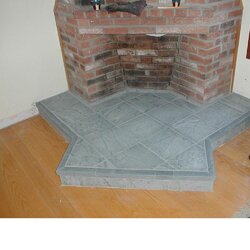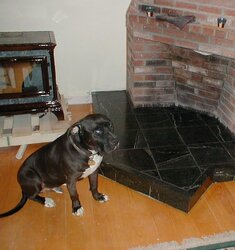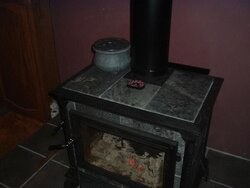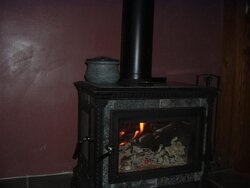So I managed to acquire a soapstone kettle to sit atop my Heritage. My dry nose and croupy kids tell me it's time to give it a try. These kettles are delivered with a non polished, turned finish that is not polished like the stove so it looks funny. If I wet the kettle's outside with water, it darkens and the colors and patterns come out nicely but then the water quickly evaporates and it looks chalky again. I hoped that the water inside the kettle might darken the kettle but that isn't happening. I have seen a photo of a kettle that had been oiled with veggy oil or something and it looked nice and dark, shiny, and with good patterns. I think this is the look I want but it doesn't look to be reversible.
Any experience with oiling a soapstone kettle? Does it make a mess on the stove, ruin the stove? Does the kettle get slippery? What kind of oil?
Thanks folks.
Any experience with oiling a soapstone kettle? Does it make a mess on the stove, ruin the stove? Does the kettle get slippery? What kind of oil?
Thanks folks.






